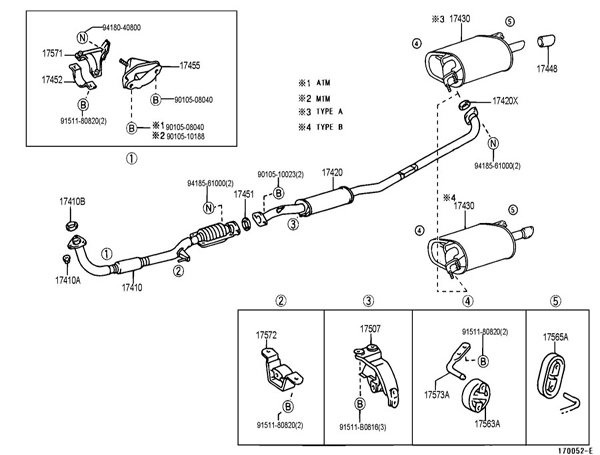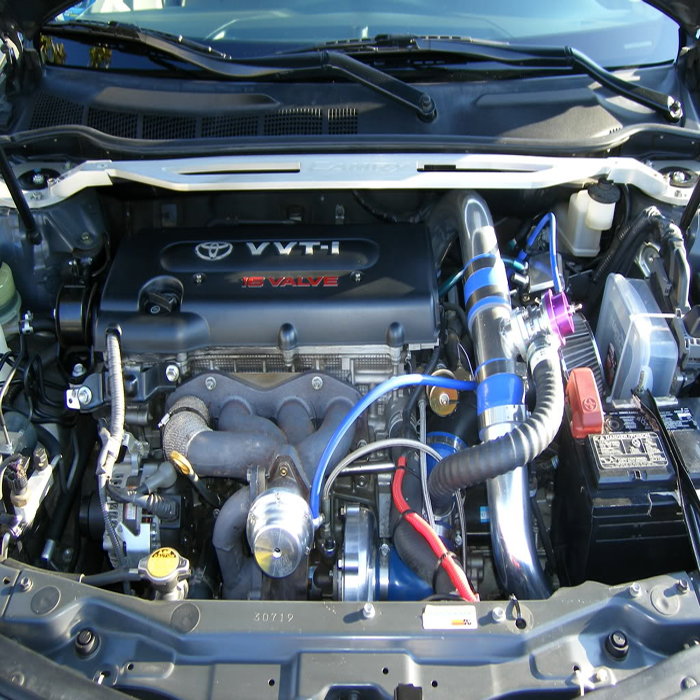Toyota Camry: How to Increase Horsepower Gain
Do you want more horsepower? There are several ways to make your engine faster. Read this article to find out what some of those options available to your Toyota Camry are.
This article applies to the Toyota Camry 4th, 5th, and 6th generation (1997-Present).
As humans, we are always on the quest for more, and as car owners, we usually embrace this mentality by means of more power. Luckily, without spending too much money, you can often achieve a more powerful Toyota Camry. Also, if money is not much of an issue, you can opt out for full engine rebuilds, resulting in double or even triple the power output of your engine. As enthusiasts there are two basic places to look into for more power. Air flow is the most common, and installing a better flowing exhaust or intake will often release more power as well. The next and more expensive place involves a process called tuning. A good tune allows the engine to be customized to the exact settings a driver wants, often releasing untapped stock horsepower. The following instructions lightly explain some upgrades you can install onto your Toyota Camry to increase its horsepower.

Materials Needed
- Screwdriver
- Metric socket set
- 3/8" ratchet
- Tuning software
- Jack and jack stands
Step 1 – Install a cold air intake
Your intake is connected to the intake manifold on your Toyota Camry, and it is responsible for sucking up air from the environment to then inject it into the engine. A normal intake restricts the amount of air that enters, limiting the amount of power your engine can create. Cold air intakes scoop air from under the vehicle, which is generally colder, and injects larger volumes into the engine. Although each intake varies according to its installation, you can still use similar steps to install them.
- Remove the older air intake assembly.
- Disconnect the vacuum lines.
- Install the new intake piping.
- Tighten each hose clamp.
- Fit the air filter on the bottom of the air piping.
- Connect the PCV valve.

Pro Tip
You can also opt to make your own intake using piping and couplings from your local hardware store.
Step 2 – Install an exhaust system
Your standard exhaust system is mostly used for optimal fuel efficiency, and because of this, your stock unit is generally restrictive in size. Aftermarket units use special mandrel bent tubing to allow the exhaust gases to easily exit the engine and free up more horsepower. Exhaust upgrades, coupled with an intake system, usually offer the best inexpensive horsepower gains.
- Remove the portion of the exhaust pipe beginning from behind the catalytic converter. (Refer to Figure 2.)
- Install the adapter tube.
- Route the exhaust pipes under the chassis.
- Install exhaust clamps on each connection.
- Tighten and torque them down in place.
- Install the muffler and exhaust tips.
- Weld the pipe connections.

Figure 2. Diagram of a 2001 Toyota Camry exhaust system. 
Figure 3. Aftermarket exhaust installed on Toyota Camry.
Step 3 – Tune your engine
After upgrading your exhaust system and intake, the next thing to do is tune your vehicle. Tuning refers to customizing the computer system on your vehicle. A tune is not easy to do, and it should only be attempted by someone who fully understands the concept. However, those of you who want your engine to be tuned can also have a professional do it using a special dynometer, which allows real-time access to the complete power band of the engine. Average Joes without access to a dynometer will have to try their luck with a basic street tune. Using a program, such as Chrome, allows you to connect with the vehicle's computer while it's being driven. Here, the operator can customize the best options in regard to the air fuel ratio and electronic timing, along with sensor disabling.

Step 4 – Install turbocharger
Turbocharging was kept last for a reason. You will have to do the above, plus more, before attaching a turbocharger to your vehicle. A turbocharger takes exhaust fumes from the engine, pulls them into a compressor, and shoots the air back into you motor at extremely high rates of pressure known as boost. This spikes up the power your engine produces. Lower levels of boost may not require extra protection inside your engine blocks. However, larger boost applications will require you to rebuild the engine and install several extra components, such as a blow-off valve, turbo manifold, and intercooler. This process can take days, months or even years to complete. So if you are looking for a long project with reliable results in power, take a peak at turbocharging.

Related Discussions
- Horsepower Gain? - CamryForums.com
- Adding Horsepower to a 1994 Camry 2.2L - CamryForums.com
- Easy Horsepower - CamryForums.com






